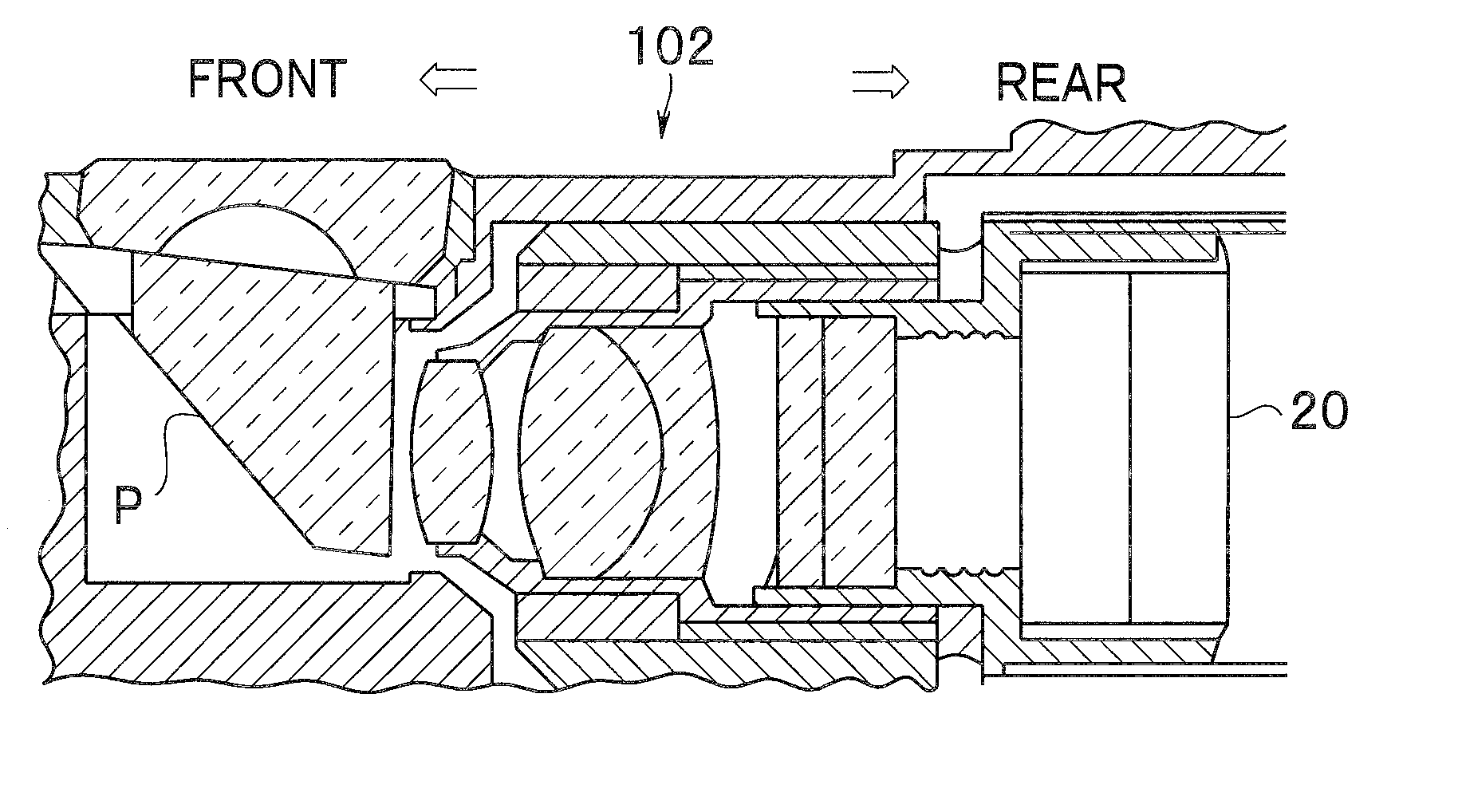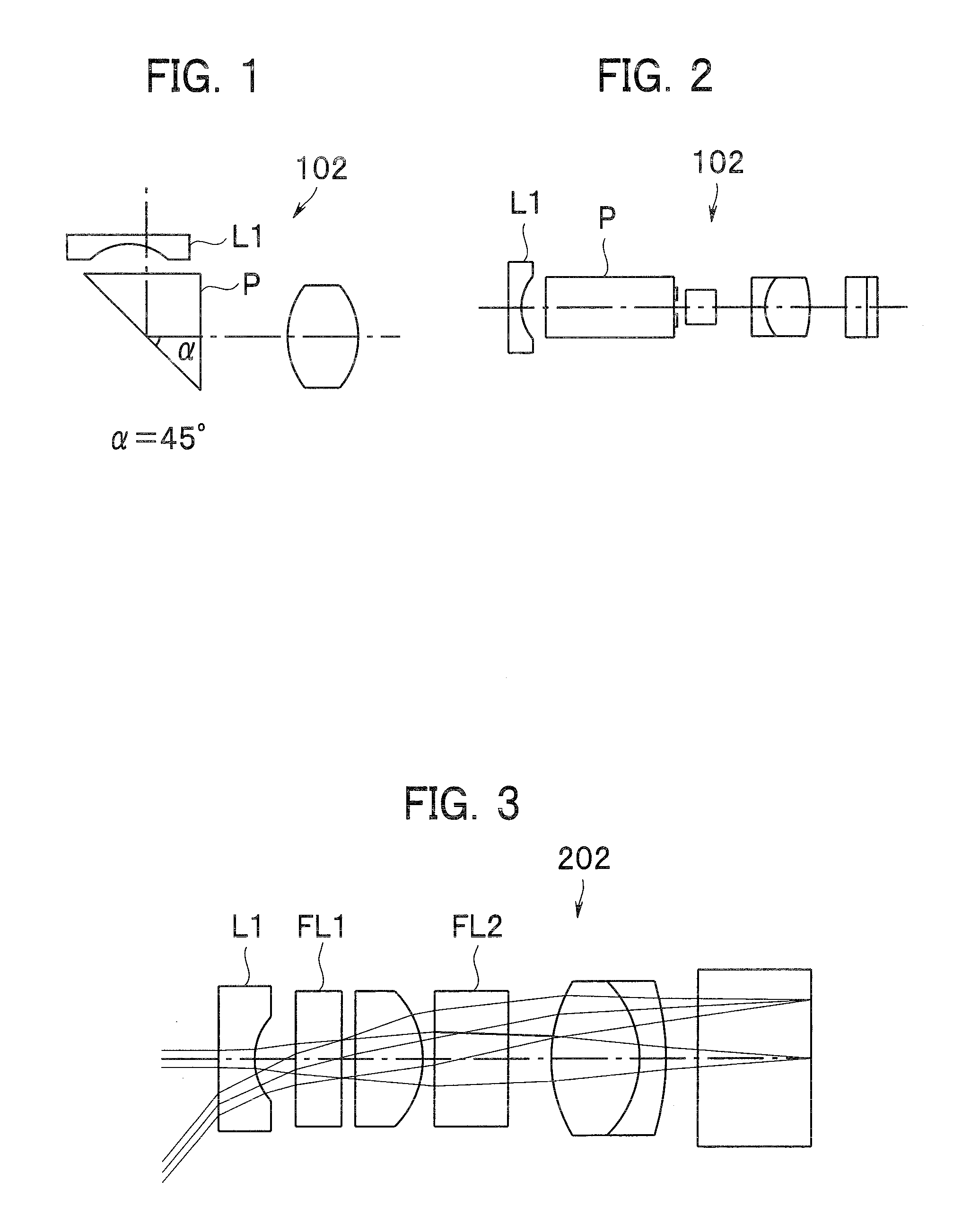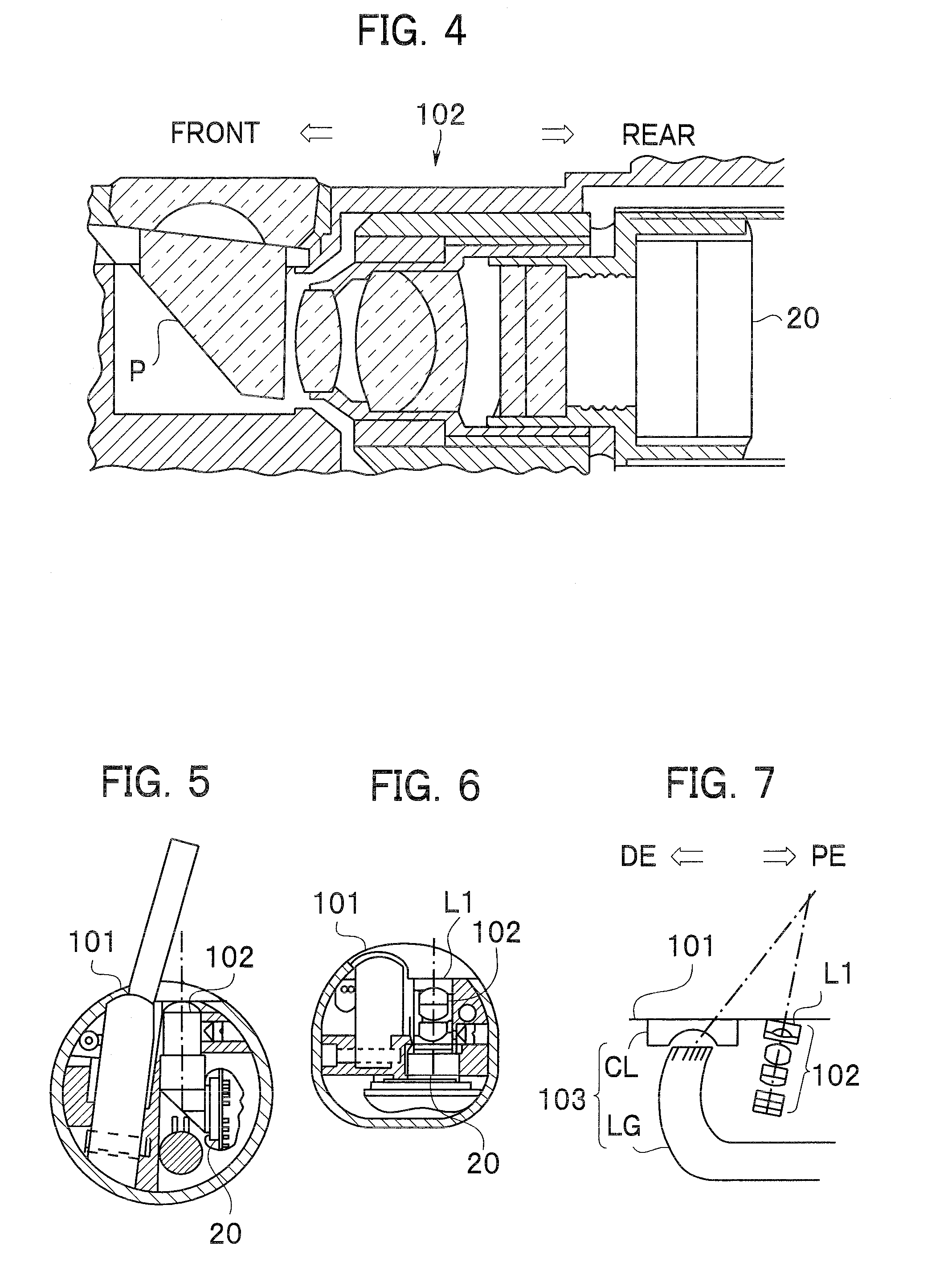Endoscope for oblique viewing
a technology of endoscope and oblique viewing, which is applied in the field of endoscope for oblique viewing, can solve the problems of difficult optical filter disposal, inability to directly apply to the oblique-viewing endoscope objective system, and increased distal end portion size, so as to achieve the effect of reducing insertability and operability
- Summary
- Abstract
- Description
- Claims
- Application Information
AI Technical Summary
Problems solved by technology
Method used
Image
Examples
embodiment 1
[0144]As shown in FIG. 11, an objective system 2A of an oblique-viewing endoscope 1A in Embodiment 1 has a positive front lens group G1, a positive rear lens group G2, a prism P interposed between the front and rear lens groups as a visual field direction converting element, and a stop S provided between the front lens group G1 and the prism P. In FIG. 11 and other sectional views each taken along the optical axis of an objective system and showing the configuration of the objective system, reference character r denotes a curved surface of a component reference character d denotes the distance between surfaces on the optical axis (the thickness of each optical member and the air distance); and the optical axis Z1 is shown in straight line form.
[0145]That is, in the objective system 2A, the front lens group G1 constituted by a first lens L1 having a negative refractive power and a second lens L2 having a positive refractive power is disposed in front of the prism P (at the left side ...
embodiment 2
[0152]FIG. 21 shows the configuration of an objective system 2B of an oblique-viewing endoscope 1B in Embodiment 2. The configuration of the objective system 2B in the present embodiment is similar to that of the objective system 2A in Embodiment 1. The same reference characters are used for the same components as those in Embodiment 1, and the description for the same components will not be repeated. In the objective system 2B in the present embodiment, a high-refraction material having a refractive index of about 2.1 or more is used as the material of a prism PB which is a visual field direction converting element. Because of the use of the high-refraction material, the air-converted length of the prism PB is short and the substantial space for disposition of the prism PB is small. FIGS. 22A to 22D are aberration diagrams of the objective system 2B in the present embodiment.
[0153]Numeric data on Embodiment 2 is shown below.
Surface No.rdn(e)ν(e)1∞0.37161.8881440.5320.70250.53261.3∞...
embodiment 3
[0154]FIG. 23 shows the optical configuration of an objective system 2C of an oblique-viewing endoscope 1C in Embodiment 3. The configuration in the present embodiment is similar to that of the objective system 2A in Embodiment 1. The same reference characters are used for the same components as those in Embodiment 1, and the description for the same components will not be repeated. In the present embodiment, a first lens L1C is formed of a sapphire crystal material. The refractive index of sapphire is rather low but use of sapphire is advantageous in that the hardness of sapphire is high and the lens outer surface is resistant to scratch or the like. In an endoscope using a lens having a small outside diameter of several millimeters in particular, even a small scratch may badly influence the image quality by causing image nonuniformity or a flare for example. In the oblique-viewing endoscope 1C using the high-hardness material, however, such band influence cannot occur easily. FIGS...
PUM
 Login to View More
Login to View More Abstract
Description
Claims
Application Information
 Login to View More
Login to View More - Generate Ideas
- Intellectual Property
- Life Sciences
- Materials
- Tech Scout
- Unparalleled Data Quality
- Higher Quality Content
- 60% Fewer Hallucinations
Browse by: Latest US Patents, China's latest patents, Technical Efficacy Thesaurus, Application Domain, Technology Topic, Popular Technical Reports.
© 2025 PatSnap. All rights reserved.Legal|Privacy policy|Modern Slavery Act Transparency Statement|Sitemap|About US| Contact US: help@patsnap.com



